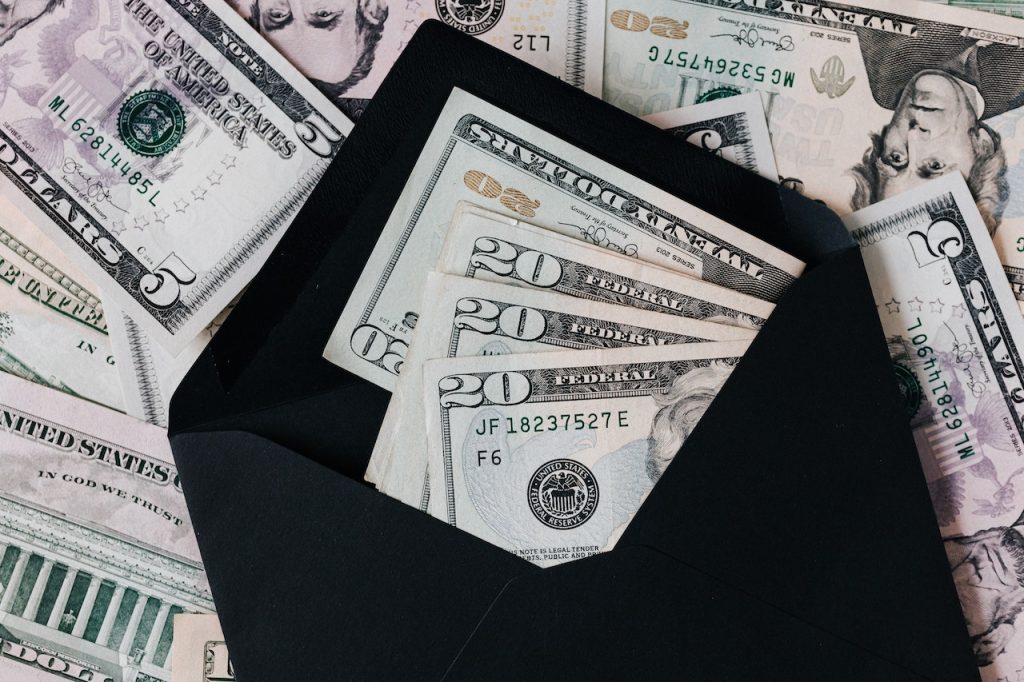- Why seeking outside equity investors for an SBA loan can help you purchase a larger business
- Who is your ideal equity investor?
- How to structure the deal with outside investors
- What size of business you should consider
Although many are familiar with SBA loans for acquiring a business, many entrepreneurs are unaware of the potential value of using outside equity investors to purchase a much larger endeavor.
This will allow you to put other people’s money to work, guaranteeing you much more in annual revenue while retaining 70-80 percent of a much larger business while putting less of your own money into the business.
The real challenge is finding the right deal for both you and the outside investors. They are also going to want to make money, usually the value of their initial investment over five years or so in addition to their stake in the company.
What are SBA Loans?

The Small Business Administration, founded in 1953, assists small businesses and many looking to purchase businesses that plan to borrow under their 7(a) program. The government guarantees 75 percent of the uncollateralized amount of the loan and the local bank covers the additional 25 percent.
What many people don’t realize is that the SBA allows outside equity structures, like multiple investors, to cover the minimum equity required by the SBA.
Furthermore, outside equity investors who own individually less than 20 percent of the equity, are not required to have a personal guarantee on the loan.
This can allow you to purchase a much larger business than you could on your own.
“A lot of people are not aware that this exists. And if they were aware, they would completely change their investment thesis, and stop looking at these tiny businesses and look at slightly larger ones,” said Hayden Miyamoto, co-founder, and CEO of Acquira.
So let’s say you want to purchase a $1 million dollar business and the bank is asking for 15 percent equity investment, which is $150,000 but you only have $20,000. You can raise the additional $130,000 through outside equity investors.
This could mean much more profit for you and the investors.
Big or Small Acquisition?
Let’s quickly look at some very simple numbers to see how this could work out. These are overly simplified and don’t account for taxation, depreciation, etc. but are designed to illustrate the core concept.
| “EBITDA” stands for earnings before interest, taxes, depreciation and amortization. It is one of the most commonly used measures of a company's financial health and ability to generate cash. |
Example 1
Let’s say you want to purchase a $900,000 business making $375,000 a year. You would need to fund with equity of $90,000 to secure an SBA loan.
Depending on how much you intend to reinvest into the business, you could make around $150,000 a year in post-debt earnings. You’ve also taken all of the risk.
It’s not a terrible situation, but outside equity investors could unlock a much more profitable business acquisition.
Example 2
Instead, consider purchasing a $3,000,000 business earning $900,000 annually using outside investors.
You’ll need 10 percent down again so let’s say you put up $30,000 and raise $270,000 from equity investors.
Now you own a business with post-debt earnings of $500,000 and you could expect to earn around $260,000 a year.
The real challenge is crafting a deal with your outside equity investors regarding their stake in the business and what sort of guaranteed offer you will provide them through preferred shares and an appropriate dividend rate. More on all of this later.
Go Big or Go Home

There are several advantages to purchasing a larger business using an SBA loan, outside of the fact that they make more money annually.
Smaller businesses are inherently riskier. Let’s say you lose a key employee and sales drop 10-15 percent or something in the macro environment changes and costs increase 20 percent.
“The business can't really float that because it's not making as much money,” said Hayden.
The other factor to consider is the sheer size of the business. In both examples, you’re looking to pay back the loan in about 10 years. In the first, you own 100 percent of a smaller business and in the second you have a portion of a much larger one.
“At the end of the 10 years, I would now have a $900,000 asset with zero debt,” said Hayden. “In the second example, I am basically making 260k a year, and at the end of the 10 years, I now have 82 percent of a $3 million asset.”
Who Makes a Good Equity Investor for an SBA loan?
The investor you're looking for will not be a professional investor like a venture capital company or an investment bank.
Instead, it is probably a high-net-worth individual looking to beat the average market or real estate return. It is comfortable with the very real risk of owning a business. They’re probably looking for an internal rate of return, or IRR, between 15 and 25 percent.
They are also likely to be a passive investor and will likely let you run the business as you see fit.
“They just want their money to go to work for them,” said Hayden.
What’s in it for the Equity Investor?
They’re looking to earn 2-3 times their initial investment over 5-7 years.
“So I would say typically, people wanting a 2x MOIC, money on invested capital, over a five-year term is reasonable,” said Miyamoto. “And often that looks like 20 percent per year and then getting their entire investment back in five years.”
A professional investor – venture capital or investment banks – would be looking for an MOIC (Multiple Over Invested Capital) rate 3x. This would normally come with a board seat and/or covenants, but the Acquisition Entrepreneur may not necessarily welcome these.
What would make a Good Deal?
This is ultimately unique to each scenario in terms of your investment thesis, the size of the business, and the goals of the equity investors.
Here are a few important factors to consider:
1. How much Equity to Give Up?
This will obviously depend on how much equity the outside investor is providing relative to the size of the business.
You want to give enough away that they will hit their goals, earning the equivalent of their initial investment back in five years, for example. But you don’t want to give away too much, or you’ll harm your own long-term profitability.
“You're kind of looking to meet this person's expectations,” said Hayden. “And as an acquisition entrepreneur, to probably dilute yourself as little as possible. That's your goal.”
It can be helpful to consider how much equity in the company you are giving up relative to how much your investor provides as a multiple like 1x, 2x, etc.
In our example of a $3,000,000 business purchased with $270,000 in outside equity, a 1x equity stake would equal 9 percent ownership. This is probably too low for your investor.
“I would go as far as three if you're dealing with sophisticated investors,” said Miyamoto. “But would go as low as one or 1.5 if you're dealing with friends and family. I've always sort of thought 2 is objectively fair.”
Even though these are good rules of thumb, we recommend having a professional advisor to help you weigh in on the final figures. Acquira offers services like this through our Accelerator Program.
2. Preferred Return
The outside equity investor will also likely ask for some way to guarantee they are at least making some money every year. This is often handled with preferred shares, which carry no voting rights but are always paid first, over common shares.
You might offer preferred share dividends of 10 percent, for example.
Preferred shares are shares of a company’s stock that give the owner of those stocks a higher claim to company assets and dividends than common stock owners. Dividends for preferred shares are paid out to shareholders before common stock dividends. If the company files for bankruptcy, preferred shareholders are entitled to receive payment through company assets before common stockholders.
“They get liquidity first if you are doing dividends,” said Hayden. “If the business fails and liquidates the preferred shareholders get their money back first. It’s a very standard structure for an investor who is a limited partner.”
3. Setting the Dividend Rate
This also depends on the size and age of the business but your outside equity investor will want to know how much of the profits will be distributed versus reinvested in the business. The preferred shares help alleviate some of their desire to earn back their initial investment.
“If you were to pitch me a 100 percent dividend, I'd probably question well, what about reinvesting into the business?” asked Miyamoto.
Having the outside investor put/reinvest 50-60 percent of profits back into the business makes sense in the early years. Still, maybe 80 percent of the profits might be paid through a dividend once you’ve got enough of a float and you’ve grown the business sufficiently.
“So that amount wouldn't be a flat amount, it would likely be an amount that changes year to year,” said Hayden.
4. How Long is the Investor's Money Tied Up?
Because you are offering an equity stake in exchange for the vast majority of the money needed to purchase the business, it is for the life of the business.
Remember that you’ll have to negotiate what percentage of ownership you are willing to give up in exchange for the initial investment, expressed as a multiple like 1x, 2x, etc.
However, it is very common to have some agreement to buy back this ownership stake from the investor after a certain period of time. This way they can reasonably expect to hit their own investment goals.
“The main question that I would have as an investor is, ‘How can I be assured that I'll be able to get my money back after the five years?’,” said Miyamoto. “And so one of the things that we'd have is some kind of agreement that you would look to exit the equity position at the end of the five years.”
What Size of Business Should You Consider?

This, too, is entirely dependent on your own investment thesis, how much money you have on hand, the industry you want to focus on, etc.
But remember that using outside equity investors to finance an SBA loan will allow you to purchase a business that is much larger than you could on your own.
Acquira generally focuses on businesses that are making between $750,000 and $1,300,000 per year in adjusted EBITDA, or earnings before interest, taxes, depreciation, and amortization, said Hayden.
“You're in a perfect sweet spot that is too small for professional buyers, professional investors, too small for private equity,” he said. “And typically a little bit too big for most individuals. And so you're not competing with a ton of buyers.”
Conclusion
Using an SBA loan with outside equity investors will allow you to purchase a much larger business, which can be more profitable for you and the investors.
However, setting the terms of your deal can be tricky. They need to match your investment thesis and also satisfy the goals of your investor. This will likely take some adjusting and perseverance on your part.
Hayden said you must be straightforward in your pitch and know what you want before approaching your outside investors.
“You just need to tell me exactly what it is, You're saying that you want: $270,000, in exchange for 14 percent of the deal, or 13.5 percent of the deal, you'll issue me a 10 percent dividend, and I'll make 13.7 percent per year, and then make all my money back at the end of year five,” he said.
“If that's the case, it's a pretty simple pitch. For me, it's totally passive yield. Show me what the business is and why you're a good fit for that business.”
Acquira’s training will help you determine the best financing options for your deal. The first step is to apply for the Accelerator Program. If you’d like to learn more about how we can help you find and close a business within seven months, schedule a call with one of our representatives. We can help walk you through how to involve outside equity investors in purchasing a business using an SBA loan.
Have you explored using outside equity investors under the SBA program? If so, let us know in the comments below.
Key takeaways:
- Securing outside equity investors will allow you to purchase a much larger business, maximizing profit for you and the investor
- Each individual outside investor must own less than 20 percent of the business
- Most outside investors will be looking to earn 2x MOIC over 5-7 years
- You want to offer equity to attract investors but don't want to dilute yourself too much
- Preferred shares are one way to secure an outside investor by guaranteeing them a yearly return.
Acquira specializes in seamless business succession and acquisition. We guide entrepreneurs in acquiring businesses and investing in their growth and success. Our focus is on creating a lasting, positive impact for owners, employees, and the community through each transition.



